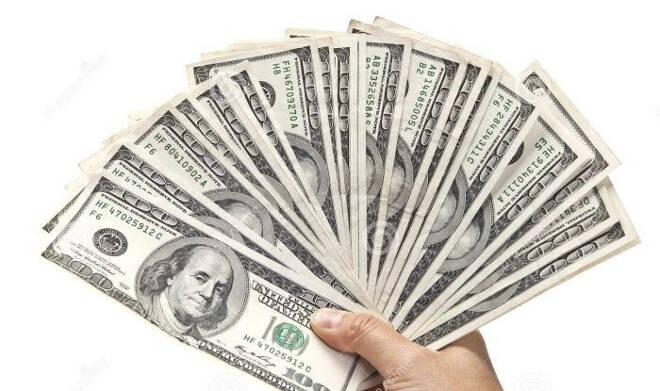Advertisement
Advertisement
$2 Trillion US Stimulus Package Sounds Like a Lot of Money, but Falls Well Short of What Will Be Needed
By:
Flash forward to 2020 and the lawmakers took out $1 trillion like a hot knife through butter and moved right to $2 trillion. Perhaps later this year, they’ll have to move to $5 trillion.
What a difference 10-years makes. A decade ago the U.S. government bailed out the major banks with a $750 billion TARP package. And if I understand it correctly, they stopped at $750 billion because a trillion dollars just didn’t sound right and would have drawn too much attention from politicians and taxpayers.
Flash forward to 2020 and the lawmakers took out $1 trillion like a hot knife through butter and moved right to $2 trillion. Perhaps later this year, they’ll have to move to $5 trillion.
One problem with TARP was the government just handed the banks the money and didn’t tell them what to do with it. Was it returned to mortgagees whose homes were underwater? No. Did it bailout any U.S. citizen? Other than bank executives, I don’t think so.
Today, most Americans are still paying for the financial crisis of 2008-2009. In most of the country, house prices have not returned to pre-2008 levels. Stocks have soared but most Americans have not participated in the rally.
Many jobs have been created during the 12 year expansion and the Washington politicians are trying to do their best to guarantee that employees will be supported during this crisis. They hope that the corporations that receive some of the government aid use it to pay their employees. They hope that those who have already been laid off will receive enough unemployment benefits to survive the coronavirus crisis.
Let’s hope so too because the U.S. economy is consumer driven and with the numerous lockdowns and shutdowns, it may be a while before people will be out there spending away. Let’s also hope that a few of the better off Americans don’t treat the government gift as free money and blow it on lottery tickets.
Let’s hope everyone spends the money wisely. During Hurricane Katrina, those affected were given $2000 debit cards that ended up all over the country and not just in Louisiana where it was needed to revive the economy. During the financial crisis, the government money went to those who really didn’t need it.
Hurricane Katrina was all about Mother Nature exerting her force. The financial crisis was caused by man’s greed. The Coronavirus Crisis appears to be a combination of nature and bad decisions by man.
So it makes sense that the new government stimulus plan is designed to support the average American and a few major corporations. On paper, it looks like a balanced deal, but they always do until individuals and corporations start finding the loopholes.
Is the stimulus plan money enough to support the economy? The state of New York is expected to receive $3.8 billion, of which only $1.3 billion will be sent to New York City.
“Sounds like a lot of money,” New York Governor Cuomo said. But it’s far below the shortfall in revenue that the state projects it will face, which the governor said could total $15 billion.
“That is a drop in the bucket’ compared with what New Yorkers need, he said. “How do you plug a $15 billion hole with $3.8 billion? You don’t.”
Giving taxpayers and corporations free money is great, even if it only buys a few months of security. Like the U.S. medical response to coronavirus, the fiscal response seems to be falling a little short of expectations.
About the Author
James Hyerczykauthor
James Hyerczyk is a U.S. based seasoned technical analyst and educator with over 40 years of experience in market analysis and trading, specializing in chart patterns and price movement. He is the author of two books on technical analysis and has a background in both futures and stock markets.
Did you find this article useful?
Latest news and analysis
Advertisement
